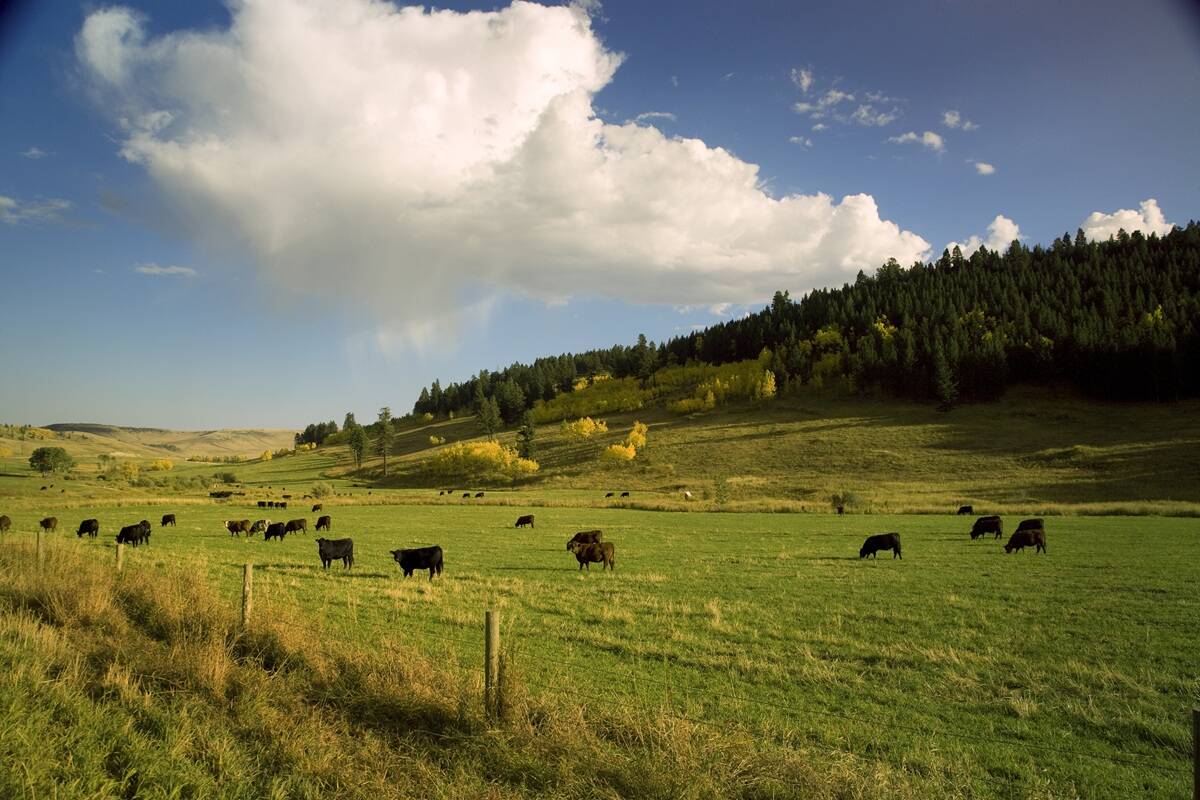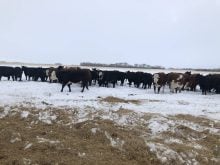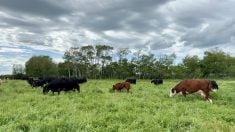In my August column, I wrote on the topic of creep feeding, a practice that many producers utilize to improve body condition and weaning weights, particularly during drought situations. Unfortunately, as summer has unfolded, significant areas of the country have experienced abnormally dry conditions, and as a result, many producers are scrambling for winter feed supplies. With this column, I will focus on some of the more common options one can use to supplement traditional forage and grain options.
Read Also

Are you a competitive supplier of weaned beef calves?
Beef farmers and ranchers need to strategically manage costs to achieve and maintain profitability.
First, let’s look at the various screening products available commercially. Grain screenings are residual material from the cleaning of grain, oil seeds and pulses. They consist of broken kernels, immature canola seeds, weed seeds, chaff, dust and dirt. Grain screening pellets can be used to extend silage and/or hay supplies. Typically, they will be 11 per cent to 13 per cent crude protein with a total digestible nutrient (TDN) value ranging from 60 per cent to 65 per cent. For comparison purposes, these values are similar to that of barley silage. The variability in the above nutrient values reflects the variability in the source of plant material and the specifics of the various cleaning facilities used to generate the screenings. Pea and lentil screenings typically are higher in protein and energy than cereal-based screening products.
Grain screenings are best utilized by cattle when pelleted. This ensures that small weed seeds and immature canola seeds are digested by the animal. Many feed manufacturers will fortify grain screenings with an energy source such as barley prior to pelleting. While increasing cost, this practice serves to increase the energy density of the pellet and reduces nutrient variability. A potential issue that has arisen over the last five to 10 years with grain screenings is contamination with ergot and other mycotoxins. While the vast majority of feed manufacturers are taking precautionary steps to minimize this issue, it is a good idea to have representative samples tested for mycotoxins prior to feeding.
Another byproduct of the grain processing industry is mill run or wheat midds. This product consists of various fractions of the wheat kernel such as the bran, endosperm and germ, as well as rejected flour. Similar in energy to barley grain and high in crude protein (i.e. 14 per cent to 18 per cent), wheat midds, when competitively priced, are an excellent source of energy and protein for cattle in drought situations.
There are also a variety of high-fibre byproducts that can be used as forage substitutes. These include cereal and pulse straws, oat and soybean hulls, and corn stover. Cereal straw has been used as a forage substitute in drought situations with varying degrees of success for many years. The key to successful utilization is to understand the nutritional limitations of straw relative to good-quality hay or silage. For example, a good-quality alfalfa/brome hay might average 14 per cent crude protein and 60 per cent TDN. Wheat or barely straw will typically average four per cent crude protein and 35 per cent to 40 per cent TDN. These values indicate that regardless of the stage of pregnancy, cereal straw is deficient in both of these key nutrients. Diets formulated with high levels of straw will require supplementation with both energy and protein. It will also be necessary to consider a balanced mineral and vitamin supplementation program.
Another potential issue with feeding high levels of straw is rumen/abomasum impaction. Due to its fibrous nature, straw is slowly digested in the rumen, particularly if there is a lack of available energy necessary to stimulate rumen bacteria. Supplementing grain is a must to ensure normal digestion and digesta passage from the rumen. A rule of thumb that I use when formulating straw-based diets is to limit straw intake to 1.25 per cent to 1.5 per cent of body weight. Thus a 1,300-pound cow would consume 17 to 20 pounds of straw per day. As with screenings, pea and lentil straw tend to be better sources of energy and protein than cereal straw.
Corn stover is the plant material remaining after the grain has been harvested. It consists of leaves, husks, stalks and any kernels or cobs not harvested. The energy value of this residue depends in large part upon the relative proportions of the above residues. If one considers only the plant residue (i.e. leaves, husks, stalks and cobs), one is typically looking at a feed source that is slightly better than cereal straw in both energy and protein content. Residue grain kernels or unharvested cobs will significantly increase the feeding value of the crop aftermath. For cows in early to mid-gestation and not experiencing cold stress, corn residue can be an adequate energy source; however, protein may be limiting. Cows grazing corn residue will be selective in what they consume (i.e. grain kernels, leaves and husks ahead of stalks); as such it may be necessary to restrict access with electric fencing in order to minimize sorting and wastage.
The above are examples of alternative feeds that can be used to extend winter forage supplies. There are many other byproducts that may be available depending on location. As evidenced from the above discussion, many of these will require special precautions when feeding. As such, it is recommended to consult a nutritionist when planning a feeding program based on byproduct feeds.

















